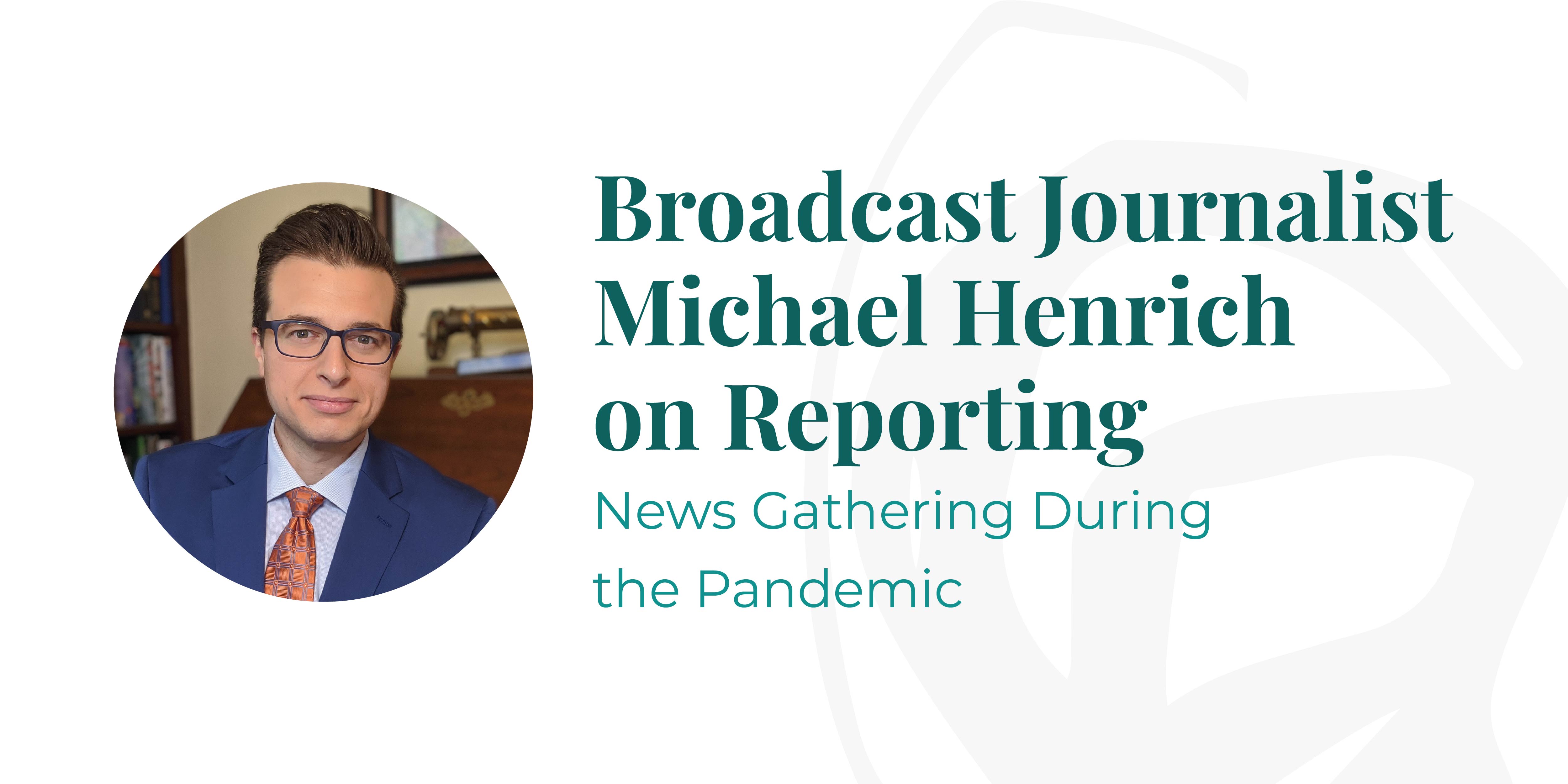Broadcast Journalist Michael Henrich on Reporting, News Gathering During the Pandemic
Feb 11, 2021 Lisa van der Pool
Veteran broadcast journalist Michael Henrich, who has spent the past six years as a reporter and anchor at Boston 25, recently sat down with us (virtually) to share his thoughts on how he has approached coverage during COVID-19, the Black Lives Matter movement and his advice for PR professionals during the pandemic.
Lisa: How has local broadcast coverage and the pace of your coverage changed since the COVID-19 pandemic began?
Michael: On some level, the collective pace of broadcast news hasn’t changed a bit in the past year since the COVID-19 pandemic began. At the same time, the focus of that coverage has dramatically shifted toward the same three topics: the pandemic, racial inequity, and the presidential election and aftermath. Many of the other stories we used to cover on a daily basis have fallen by the wayside, understandably.
Lisa: Coverage is clearly no longer solely focused on COVID-19 - or is it? How do you decide what to cover each day - what is newsworthy?
Michael: If a story doesn’t have at least a little bit of a tie-in to the pandemic, racial justice or the election aftermath, it’s having a tough time breaking through and getting coverage. This is such a unique moment. Those three topics impact everyone on such a deep level that prioritizing resources to cover the latest developments in those areas is just very instinctual to most journalists.
Lisa: How are you getting information and getting in touch with sources now that all of your interviews have to be conducted remotely?
Michael: Well, that part hasn’t changed much! Calling, emailing and pinging people on social media has long been so instrumental in getting information and developing sources. Not being able to casually connect in person at stories is a big loss to the relationship-building process and I don’t want to downplay that. With many people in the same boat working from home, though, I’ve found that a lot of newsmakers are even more willing to not only speak, but speak on short notice.
Lisa: Black Lives Matter is a massive story - How has your newsroom approached coverage of the movement in general?
Michael: When I was with Boston 25 News, the team dedicated nearly all its reporting resources to meet the moment in 2020. That said, Black Lives Matter didn’t start in 2020, nor did it receive coverage as the social justice movement that it is until after the death of George Floyd. Journalists want and should work to take their bias out of their reporting as much as humanly possible. That’s how you earn and maintain the trust of the viewer, delivering accurate information. At the same time, many newsrooms instinctually put too much emphasis on affording platforms to both sides of an issue, even when one side is deliberately slandering the other with falsehoods. In 2020, the video of George Floyd forced the reality of the moment to a head and newsrooms started more accurately and appropriately covering what was happening in our country without as much fear of backlash from those who would deny such reality.
Lisa: How has BLM potentially changed how you think about racial bias in your team's own reporting and diversity in your sourcing? For example, many news outlets now capitalize "Black" or have made pledges to have more racially diverse experts quoted in their reporting.
Michael: While I did – and continue to do – a lot of self-exploration, the uncomfortable reality is that well-intentioned white people who seek out and admit to their blind spots can only do so much. Everyone – news organizations and the public – would greatly benefit by having diverse voices and perspectives at every level of a news organization. The news industry has a long way to go when it comes to equity in on-air, behind-the-scenes and management positions.
Lisa: How has your beat changed due to COVID-19 or what your team is focused on/ what your editor wants from you?
Michael: As a morning reporter, my rotation of stories often included transportation issues and overnight breaking news like fires and crime. Since the start of the pandemic, and especially in the last six months, it feels like COVID-19 and its offshoot issues have been pretty much all I’ve covered. That – and the election aftermath.
Lisa: What do you think PR professionals should be telling their clients right now about the communications and news they’re putting out externally?
Michael: Self-awareness is important. Given the climate right now, is it realistic to expect earned media coverage? If the answer’s no, it might be best to put that content on your own platforms, while continuing to be self-aware about the timing of the release. If the answer’s yes, I would recommend that PR professionals really double down on figuring out who the right reporter is for their pitch or beat and attempt to build a real or digital relationship with them ahead of time. I hate to say it, but most journalists are very quick to delete any PR email, let alone one from someone with whom they haven’t connected before.
Lisa: What are examples of some of the most relevant, interesting PR pitches you’ve gotten over the past few months? Whether it is expert sources, proprietary data, research, etc. I’d be interested to know what those were and how it worked for your reporting.
Michael: Shortly after the onset of the pandemic, companies started repurposing their resources to step up and help with some of the supply shortages that hospitals and other frontline arenas were experiencing; the clothing company that halted its launch in order to make masks, or the soda company that turned plastic 2-liters into face shields, for example. I couldn’t get enough of those pitches and loved how many were approved by our producers. Those pitches from agency and in-house communications professionals were timely, relevant to the bigger picture, and clear win-win opportunities for the companies and the viewers, who were mostly stuck at home, glued to their devices, and needed to hear some good news.
Lisa: Newsrooms across the country have undergone tremendous stress and in some cases layoffs, how do you handle this personally? How do you alleviate the stress?
Michael: This one hits home! Thousands of journalists across the country lost their jobs in 2020 due to COVID-19’s impact on news outlets’ budgets. Unfortunately, I just recently lost my job for the same reason in 2021.
I’m a very positive person and, while at Boston 25 News, I would always strive to work hard and stay focused on the things that were within my control. The station’s decision to not offer me a new contract, citing those budget concerns, was out of my control.
Was I stressed leading up to learning that decision? You bet! It’s frustrating and scary to lose your job when your family depends on you to pay the mortgage, especially after risking your and their lives by reporting in the field during a pandemic.
At the same time, I also had prepared as best I could by rebuilding my resume, demo reel and starting the networking process, just in case. Life throws many curveballs and I’m determined to do what I need to do to make sure I can look back on this difficult time with gratitude.
Thank you, Michael, for sharing your perspective with us!
For more information about Inkhouse’s approach to media relations, subscribe to our newsletter or contact our team at workwithus@inkhouse.com.






